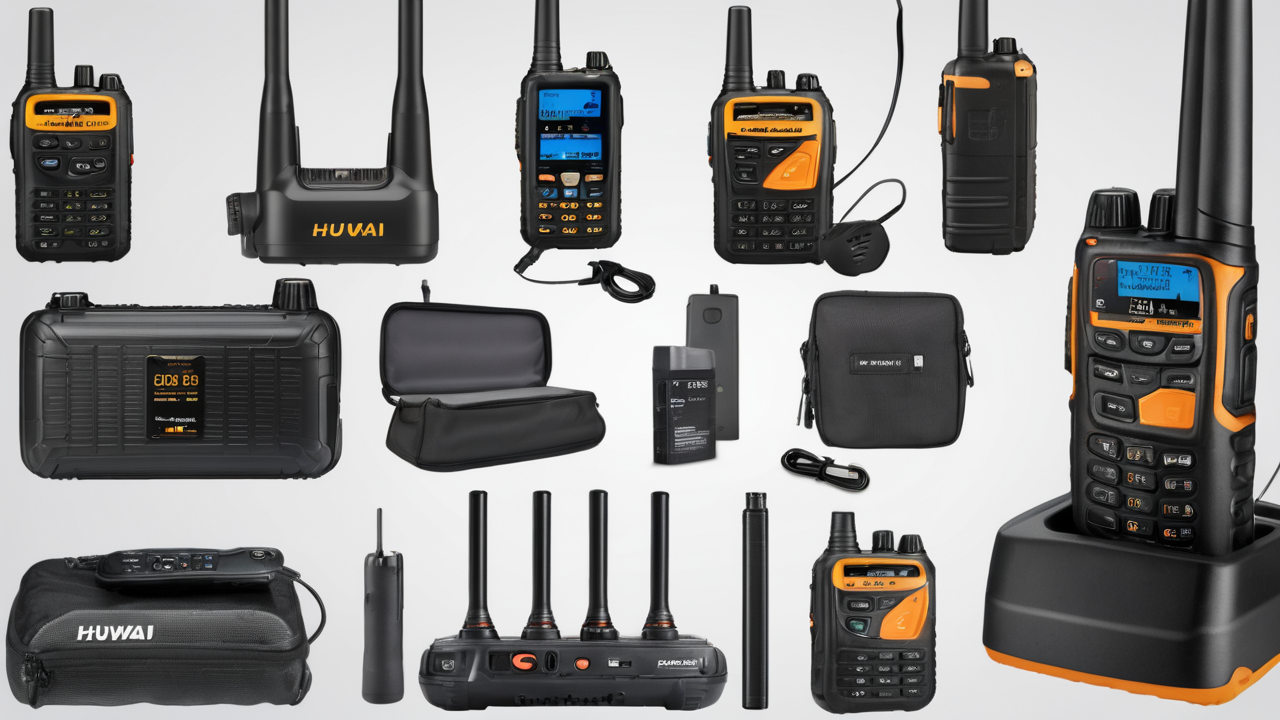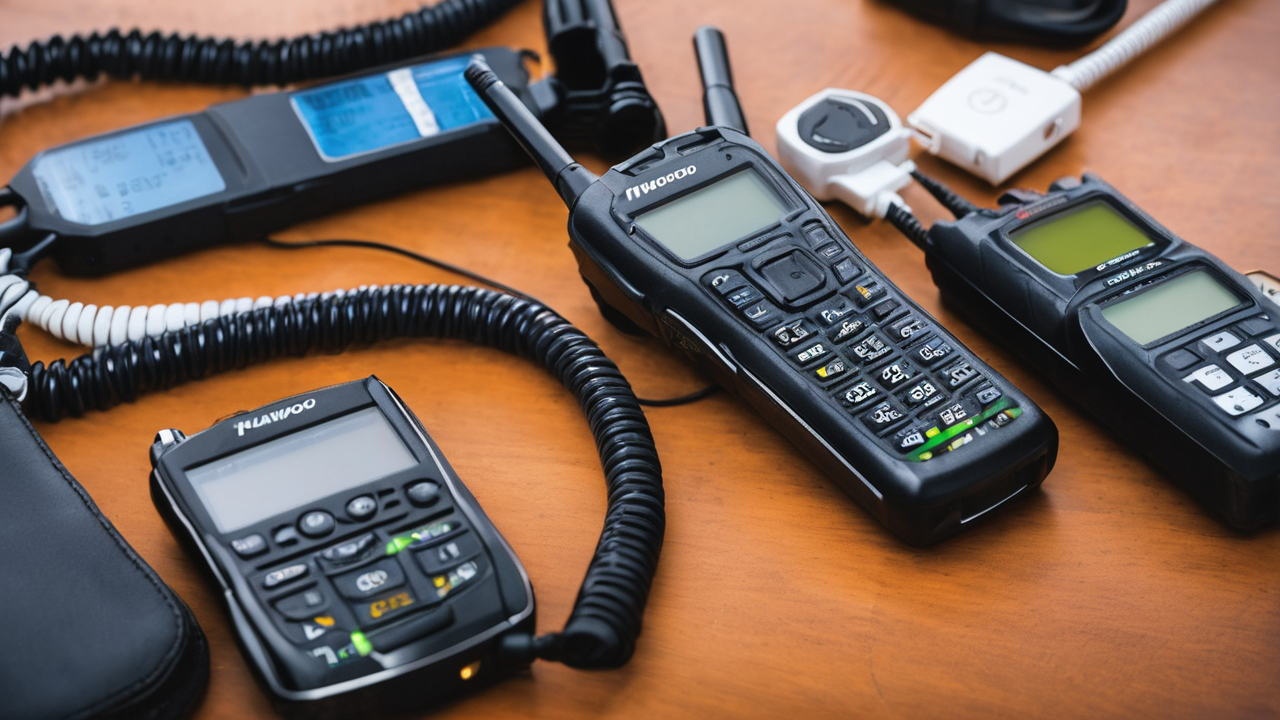Understanding Long Range Walkie Talkies: Capabilities and Considerations
The Science Behind Long Range Communication
Long range walkie talkies use radio waves to transmit signals over vast distances. These devices operate on specific frequencies, allowing for clear communication. The range depends on factors like terrain, weather, and obstacles.

Most walkie talkies use UHF or VHF bands. UHF works well in urban areas, while VHF is better for open spaces. The 1000-mile claim is often exaggerated. In reality, the range is much shorter due to the Earth's curvature and signal interference.
To achieve longer ranges, manufacturers use advanced antennas and powerful transmitters. However, legal restrictions limit the maximum output power. This means that true 1000-mile coverage is not possible with current technology.
Key Features of Long Range Walkie Talkies
Long range walkie talkies offer several important features:
- Multiple channels: Allow users to switch frequencies for privacy
- NOAA weather alerts: Provide real-time weather updates
- VOX (Voice-activated transmission): Enables hands-free operation
- Noise cancellation: Improves audio quality in loud environments
- GPS integration: Helps track location and share coordinates
- Waterproof design: Protects against moisture and accidental submersion
- Long battery life: Ensures extended use in remote areas
- Dual-band operation: Allows switching between UHF and VHF frequencies
These features enhance the usability and reliability of long range walkie talkies. They make them suitable for various applications, from outdoor adventures to emergency communications.
User Experience and the Importance of Durability and Battery Life
User experience is crucial for long range walkie talkies. Ease of use, clear audio, and reliable performance are key factors. Durability is essential, especially for outdoor use. Devices should withstand drops, impacts, and harsh weather conditions.
Battery life is another critical aspect. Long range communication demands more power. Users need devices that can last for extended periods without recharging. Many models offer rechargeable batteries or the option to use disposable ones.
Comfort is also important for prolonged use. Ergonomic design and lightweight construction reduce fatigue. Some models feature belt clips or lanyards for easy carrying. Clear displays and intuitive controls enhance the overall user experience.
Comparative Analysis: Top Long Range Walkie Talkies in the Market
Reviewing the Market Leaders: What Sets Them Apart
Several brands dominate the long range walkie talkie market. Each offers unique features and benefits:

- Motorola T600: Known for its rugged design and water resistance
- Midland GXT1000VP4: Offers 50 channels and a range of up to 36 miles
- BaoFeng UV-5R: Popular for its affordability and programmability
- Cobra ACXT1035R FLT: Features a built-in flashlight and floating design
- Kenwood TK-3402U16P: Favored for its professional-grade performance
These models stand out for their reliability, range, and feature sets. While none truly offer 1000-mile coverage, they provide excellent performance within their actual ranges.
Consumer Preferences: Features That Matter to Users
Consumers prioritize different features based on their needs:
- Range: The most crucial factor for many users
- Battery life: Essential for extended outdoor use
- Durability: Important for rugged environments
- Ease of use: Valued by both novice and experienced users
- Additional features: Weather alerts, GPS, and privacy codes are popular
- Price: A significant consideration for budget-conscious buyers
- Brand reputation: Many users trust established brands
- Customer support: After-sales service can be a deciding factor
Understanding these preferences helps manufacturers design products that meet user expectations. It also aids consumers in making informed purchasing decisions.
Price vs. Performance: Finding the Value Proposition
Price and performance are key considerations when choosing long range walkie talkies. Higher-priced models often offer better range, durability, and features. However, they may not always provide the best value for every user.
Budget-friendly options can offer good performance for casual users. Mid-range models often strike a balance between price and features. Professional-grade devices command premium prices but deliver superior performance.
When assessing value, consider:
- Intended use (casual, professional, emergency)
- Required range and features
- Frequency of use
- Environmental conditions
- Long-term reliability and warranty
Comparing these factors against the price helps determine the best value proposition. It's important to choose a device that meets your needs without overpaying for unnecessary features.
Advancements and Future Trends in Long Range Communication Technologies
Technological Innovations on the Horizon
The future of long range communication looks promising. Several innovations are on the horizon:

- Software-defined radios: Allow for more flexible and upgradable devices
- Mesh networking: Extends range by relaying signals through multiple devices
- Satellite integration: Enables truly global communication without infrastructure
- Improved battery technology: Offers longer life and faster charging
- AI-powered noise cancellation: Enhances audio quality in challenging environments
- Advanced encryption: Provides better security for sensitive communications
These advancements will likely improve range, reliability, and functionality. They may bring us closer to the 1000-mile dream, albeit through different technologies.
Regulatory Impact on Walkie Talkie Manufacturing
Regulations play a significant role in walkie talkie manufacturing. Different countries have varying rules on frequency allocation, power output, and features. Manufacturers must navigate these regulations to create compliant products.
Recent trends include:
- Stricter emission standards to reduce interference
- Expanded frequency allocations for consumer devices
- Increased focus on privacy and security features
- Regulations promoting interoperability between different brands
These regulatory changes influence product design and marketing strategies. They also affect the availability of certain features in different regions.
Predicting the Future of Long Range Communication Devices
The future of long range communication devices looks exciting. We can expect:
- Integration with smartphones and other smart devices
- Increased use of digital technologies for clearer audio
- More compact and energy-efficient designs
- Greater emphasis on eco-friendly materials and manufacturing
- Enhanced emergency features for outdoor and disaster scenarios
- Wider adoption in various industries beyond traditional use cases
While true 1000-mile walkie talkies may remain elusive, the overall capabilities of these devices will continue to improve. The focus will likely shift towards more reliable, versatile, and user-friendly communication solutions.


